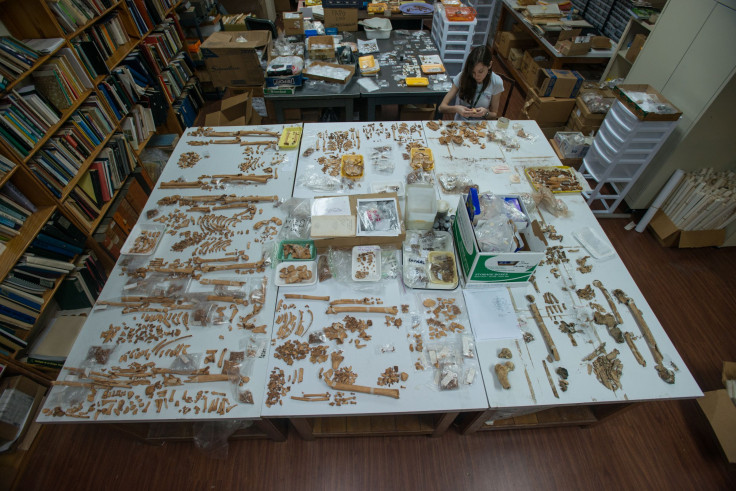Human Bones Show Cancer In Teen Buried At Panama’s Old Witch Hill

A teenager with bone cancer was buried among trash at an abandoned settlement called Witch Hill, and archeologists are trying to figure out why.
“As far as we know, this is the first case of cancer in ancient human remains reported from Central America,” Smith-Guzmán said, adding that it could have been osteosarcoma or Ewing sarcoma.
In the case of osteosarcoma, it affects teens more than any other age group and the upper arm is one of the most common locations for it to appear, according to the American Cancer Society. It affects the cells that give our bones their structure. Ewing sarcoma most commonly affects teens as well.
Read: This Ancient Civilization Worshipped Feet
Bone cancers can cause anemia, a deficiency in red blood cells that lowers the amount of oxygen circulating through the body, because the disease can affect the body’s ability to make red blood cells — a process that takes place in the bone marrow. People with anemia may experience fatigue, lightheadedness and shortness of breath, and they may feel cold.
The study described the dead teen’s condition as “a visible, painful, and rare pathology.”
Smith-Guzmán is going to analyze the teenager’s DNA to learn more about the young person, including narrowing down the type of bone cancer he or she had and trying to trace his or her ancestry, the STRI said.
Read: Ancient American Teen Gave Birth, Then Fell to Her Death
The incomplete skeleton dates back to about 1300 and, despite sounding like an unceremonious and even disrespectful send-off for a dead person, was probably a ritual burial, according to a study in the International Journal of Paleopathology. That’s based on the position the bones were found in and what was buried with the teen.
“The body was tightly wrapped in the fetal position and buried face down with two clay pots and a shell trumpet like those still used by indigenous Ngäbe people in this area today,” bioarchaeologist Nicole Smith-Guzmán said in a statement from the Smithsonian Tropical Research Institute.
But humans had abandoned the Witch Hill site — translated from the original name Cerro Brujo — in northern Panama, near the Caribbean coast, roughly 150 years before the teen was buried, according to a comparison between a tooth from the youth and archaeological evidence from the rest of the area. And the study said this teenager’s formal burial has been the only one found there.
It’s possible that the people who lived at Witch Hill were farmers who abandoned their home because of a volcanic eruption, the STRI said.
It is still unclear why this person, between 14 and 16 years old, was buried at the abandoned settlement, in a trash pile that is the largest of five there. However, it’s possible the dead teen “may have been placed there because it was the site where the individual’s ancestors lived,” the STRI explained.
© Copyright IBTimes 2024. All rights reserved.





















